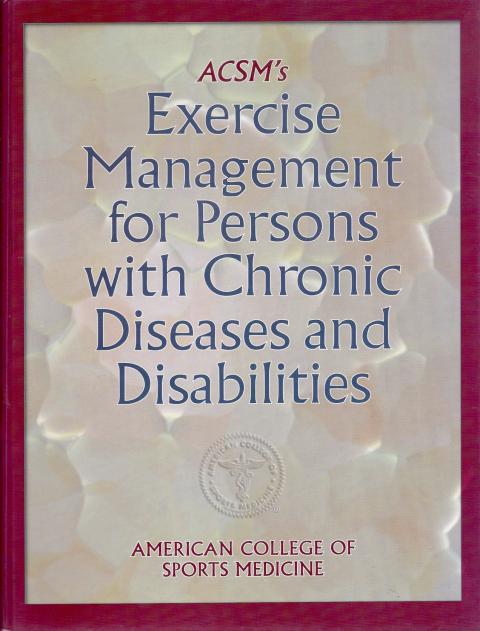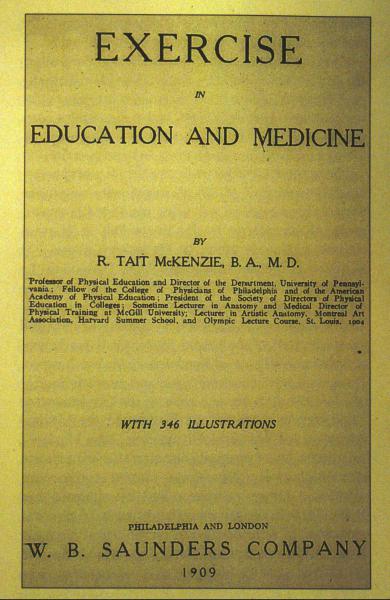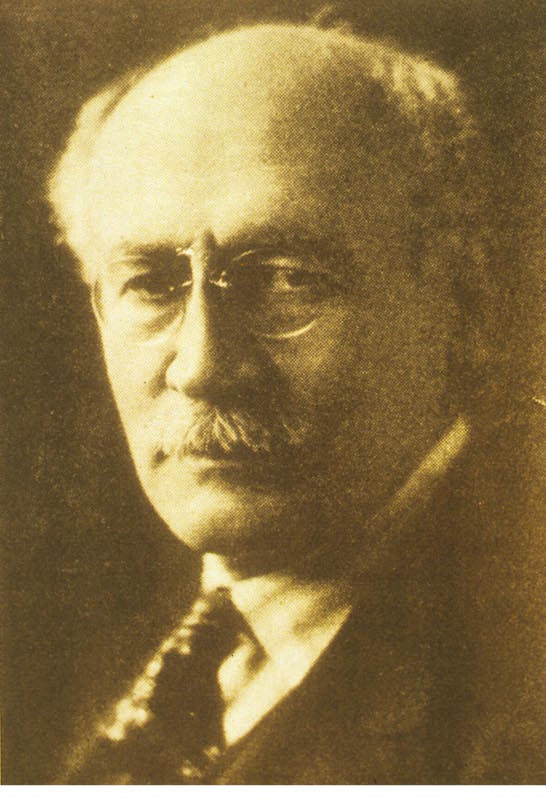
In 1993, an intrepid group of exercise physiologists, physical therapists and one physician (me) drafted the first edition of a textbook called Exercise Management of Persons with Chronic Diseases and Disabilities (CDD). Working on behalf of the American College of Sports Medicine, we sought to fill a void of exercise guidelines for patients with chronic conditions beyond the “Big Five” (heart disease, high blood pressure, high cholesterol, arthritis and diabetes). Through 3 editions with a 4th now in press, CDD addresses nearly 50 chronic conditions.
Two decades after CDD, America’s health system approach to exercise is – quite frankly – stuck in the 1980s. Very few doctors prescribe medically-directed exercise, though perhaps 4 in 10 primary care patients are good candidates. Some medical fitness facilities have programs for osteoporosis and cancer, but most gyms don’t go beyond obesity and the Big Five. Some forty conditions in our CDD series are being completely ignored.
Why is there such a monumental gap between knowledge and practice?
To answer that, we must examine the history of exercise in modern medicine, which has primarily been from the perspective of heart disease.
Exercise in Modern Medicine
In the late 1800s, debate arose about whether exercise was “good” or “bad” for the heart. It was observed that endurance athletes had hearts structurally similar to those of patients in heart failure, and that strength athletes had hearts structurally similar to patients with longstanding high blood pressure.
Physicians were unsure if there was a connection between Athlete’s Heart and pathological states, so most erred on the side of caution. Sir William Osler’s textbook advised bed rest for patients with acute heart conditions. As the Industrial Revolution replaced muscle power with engines and machine power, taking it easy was perceived as modernity, so perhaps prescribing rest fit with the times. When someone developed a heart condition, the standard-of-care in the first half of the 20th century was to prescribe bed rest.
Coincident with Osler’s waxing influence in academia, Abraham Flexner's report guided academic medicine towards molecular biology, high technology and new surgical procedures. In large part, this was because doctors could make more money by using newfangled diagnostic and therapeutic procedures, and the growth of such technologies led to the transfer of health care financing away from cash and barter and towards third-party health insurance. Diet and exercise had been central to medical practice dating back to Hippocrates, with a focus on staying well (pre-modern physicians didn’t have much else to offer). But in the 20th century, medical education would increasingly emphasize molecular biology, pharmaceuticals and surgical/imaging technologies. Traditional diet and exercise approaches to health were deemed crude in comparison, suitable more for public health than for disease care.

A minority view, pushed the founding fathers of sports medicine and later by the American College of Sports Medicine, was that exercise is good for health and makes people more robust. Debate raged between exercise advocates and mainstream medicine, while research on the role of exercise in cardiovascular disease intensified through both World Wars. By the 1950s and 1960s, research proved that exercise is indeed good for the heart, even after a heart attack, and that bed rest is a bad idea.

R. Tait McKenzie, MD
This emphasis on the heart obscured the fact that exercise is good for the whole body, that all tissues and organs benefit from regular physical activity. Advocates for strength training were mainly neuromusculoskeletal specialists, and they too had a bias towards their specialties and systematically under-estimated the whole body benefits of being strong. Cardiopulmonary rehabilitation was created for heart/lung/circulation specialists, physical therapy for orthopedists and neurologists. “Turf wars” thus carved up the field of exercise physiology, so that commonly today there is a bi-focal approach to medically-directed exercise.
There remains a lot we didn’t know about exercise in chronic conditions. For instance, there is almost no research on patients who are severely burdened with multiple chronic conditions - obesity, diabetes, lower-extremity amputation, back pain, coronary artery disease and depression. But such patients are common. As a result, the CDD recommendations are a mixture of scientific evidence, author/editor experience and we encourages a bit of logic mixed with common sense. Evidence-based advocates may not like CDD’s advice to improvise when such a patient shows up in clinic, but no patient wants to hear:
I’m sorry Mrs. Jones, there’s not enough evidence about your situation for me to try to help you.
Medically-Directed Exercise Preserves Independence and Quality-of-Life
In stark contrast to modern medicine’s obsession with longevity, the main benefit of exercise training in most chronic conditions is to improve physical functioning and preserve quality-of-life. Good overall physical functioning is essential to maintaining independence, not becoming a burden to one’s children, and staying out of the nursing home. The lurking problem is that while medicine has really gotten good at keeping patients alive, we’re creating a huge population of people who can’t be restored to full health. Bluntly, many people who are admitted to hospital but who don’t die are left with two basic paths:
- Path A - Live in a nursing home or use home health care, consuming the last of the family resources and needing lots of time, energy, money and putting emotional strain on children, or;
- Path B - Live independently, sparing wealth for their children’s inheritance, and spending time with family because they want to, not because they need the help.
From this perspective, it’s not surprising that about the only physicians who routinely prescribe exercise work in geriatrics, where the loom of the nursing home makes it clear how valuable it is to maintain independence through sound body as well as sound mind.
Unfortunately, modern medicine has devalued lifestyle approaches to health, in favor of high technology management of disease. As a result, third-party payers typically compensate health promotion efforts a rate of $0 (i.e., it's not covered by health insurance).
Because our society has become so inured to health insurance paying for a physician’s work, rather than paying physicians directly, physicians never get trained in prescribing exercise because it's not covered. And few patients ask, nor do gyms offer it for anything but the Big Five and a few other conditions, all because medically-directed exerise is not a high-tech treatment. Those are the real reasons why doctor’s don’t prescibe exercise - nobody is making it worth their while to learn how.
The biological Truth, however, is that exercise, not medications nor surgery, is the only therapy that resists the downward spiral of chronic disease and disability. Maintaining one’s physical functioning is the only way to go down Path B.
So when the day comes that you, dear reader, face the choice of Path A or B, how much will a medically-directed exercise program be worth to you?
References
Blakewell, S. Illustrations from the Wellcome Institute Library: medical gymnastics and the Cyriax collection. Medical History 41:487-495, 1997.
Durstine, J.L., L.E. Bloomquist, S.F. Figoni, G.E. Moore, P.L. Painter, K.H. Pitetti, S.O. Roberts, C.J. Pope (eds.). ACSM’s Exercise Management in Persons with Chronic Disease and Disability. American College of Sports Medicine / Human Kinetics, Champaign, IL, 1997.
Flexner, A. Medical Education in the United States and Canada. Carnegie Foundation for the Advancement of Teaching, 1910.
Fye, W.B. American cardiology: the history of a specialty and its college. Baltimore: Johns Hopkins University Press, 1996.
Hirt, S. Historical bases for therapeutic exercise. Am J Physical Med 1967; 46(1): 32-38.
Kornblueh, I.H. The future of physical medicine XIII: rehabilitation medicine in a changing world. Am J Physical Med 1967; 46(6):1458-1461.
Kraus, H. Principles and practice of therapeutic exercises. Springfield, IL: Charles C Thomas, 1949.
Levine, S.A., B. Lown. “Armchair” treatment of acute coronary thrombosis. J Am Med Assoc 148(16):1356-1369, 1952.
Licht, S. History. In Therapeutic exercise, 2nd edition, revised, pp. 426-471, New Haven, CT: Elizabeth Licht, 1965.
Mallory, G.K., P.D. White, J. Salcedo-Salgar. The speed of healing on myocardial infarction: a study of the pathologic anatomy in seventy-two cases. Am Heart J 1939; 18:647-656.
McKenzie, R.Tait. Exercise in Education and Medicine. W. B. Saunders, Philadelphia, 1909.
Moore, G.E., J.L. Durstine, P.L. Painter (eds.). ACSM’s Exercise Management in Persons with Chronic Disease and Disability, 4th edition. American College of Sports Medicine / Human Kinetics, Champaign, IL, in press.
Naughton, J., H.K. Hellerstein, eds. Exercise testing and exercise training in coronary heart disease (Airlie conference in exercise testing and training of patients). New York: Academic Press, 1973.
Osler, W. The Principles and Practice of Medicine: designed for the use of practitioners and students of medicine. 7th ed. New York: D. Appleton & Co, 1909.
Saltin, B., G. Blomqvist, J.H. Mitchell, R.L. Johnson, Jr., K. Wildenthal, C.B. Chapman. Response to exercise after bed rest and after training: a longitudinal study of adaptive changes in oxygen transport and body composition. Circulation 1968; 38(5 (suppl. vii)):VII-1 - VII-78.
White, P.D., H.A. Rusk, B. Williams, P.R. Lee. Rehabilitation of the cardiovascular patient. New York: McGraw-Hill, 1958.
- GE Moore MD's blog
- Log in to post comments
- Follow our Blog
